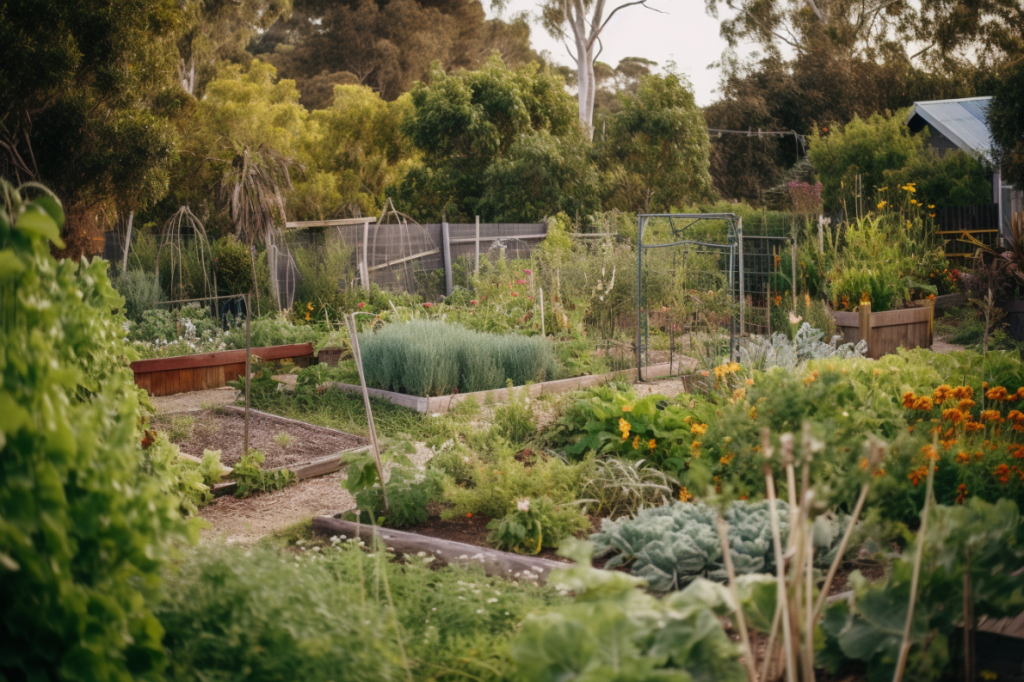
Permaculture is a holistic approach to growing and maintaining sustainable, regenerative landscapes that are beneficial for both people and the planet. With more than 3 million practitioners in over 150 countries around the world, permaculture has become an increasingly popular method of homesteading worldwide.
Incorporating permaculture practices on your homestead can be incredibly rewarding and beneficial; in fact, research shows that doing so could increase yields by up to 300% compared with traditional agricultural methods!
Transitioning to permaculture-based farming provides us with many opportunities – from building local resilience and creating self-sustaining systems to enhancing biodiversity and improving soil health.
In this article I will discuss some of these benefits in detail, providing insight on how you can use permaculture principles on your own land or backyard garden. By learning about the advantages of incorporating permaculture into our lives we can start making positive changes towards creating a healthier future for ourselves and others.
Building Local Resilience
When it comes to building local resilience, the practice of permaculture can be a powerful tool. It allows us to design our homesteads in harmony with nature, providing food and shelter for ourselves and other living things. This helps ensure that we are able to more easily take care of our own needs while also helping those around us survive and thrive through difficult times.
By implementing permaculture principles on our homesteads, not only do we create a more self-sufficient environment – one that is better suited for producing abundant resources such as food, water and energy – but we also build community connections which can become invaluable during natural disasters or economic downturns.
Through these partnerships amongst neighbors and friends, we strengthen ties between ourselves and the land, improving our sense of belonging to something greater than ourselves.
Enhancing Biodiversity
After discussing the benefits of local resilience, let’s now touch upon another important element in permaculture – enhancing biodiversity. It may seem counterintuitive to suggest that bringing more life into your homestead can result in a better lifestyle for you and your family; however, this is one of the core tenets of permaculture!
Here are just a few reasons why incorporating biodiversity on your property will be beneficial:
- You’ll have an abundance of natural resources at your disposal all year long.
- There will be fewer pests and diseases to worry about due to increased competition from other species.
- The presence of pollinators will ensure healthy yields from plants grown without relying on synthetic inputs or chemical fertilizers.
By diversifying what grows on our land, we create unique microclimates which provide habitat for native wildlife, allowing us to observe nature up close while also playing an active role in conserving it.
This process creates a continuous cycle as these organisms bring additional nutrients back into the soil and help build fertility naturally over time. Furthermore, encouraging biodiverse ecosystems on our farms increases carbon sequestration capabilities and enhances water infiltration rates, helping mitigate climate change effects.
Ultimately, by understanding the interconnectedness between ourselves and nature, we become stewards who perpetuate ecological balance with every decision made.
Improving Soil Health
Permaculture practices can have a huge positive impact on the overall health of your soil.
One major benefit to incorporating permaculture into your homestead is that it increases soil organic matter, which provides essential nutrients for healthy plant growth and helps retain water in drier climates.
Composting is an excellent way to add vital organic material back into the soil; compost not only adds important microorganisms necessary for healthy soil but also improves its texture by helping to break down clay particles and increase aeration.
Additionally, mulching with compost or other natural materials like straw can help suppress weeds, reduce erosion, conserve moisture and provide protection from extreme temperatures – all key components of successful permaculture design!
Mulch will also decompose over time, adding essential nutrient-rich organic matter back into the soil as well.
Finally, planting cover crops such as legumes (like clover) helps fix nitrogen in the soil and improve fertility long term.
With these simple techniques you’ll be able to achieve good results quickly while creating a more sustainable system for years to come!
Creating Self-Sustaining Systems
Planting permaculture practices on a homestead is the perfect path to progress towards sustainability. Permaculture principles provide an effective way of improving soil health, and can be used as a powerful tool for creating self-sustaining systems.
With the right knowledge, expertise, and dedication, we can all benefit from the promises of permaculture. By purposefully planning and planting perennials that form complex ecosystems with multiple species interacting in natural harmony, homeowners can create their own living landscape full of diversity and balance.
This unique approach grounds us in nature’s rhythms while providing year-round food production – making it much easier to produce our own healthy food without relying on grocery stores or expensive inputs. What’s more, this holistic system allows for maximum resource efficiency by utilizing water capture techniques such as swales and ponds to store rainwater for future use.
Rather than simply using traditional farming methods like tilling and applying synthetic chemicals, we can work with nature to restore damaged land and create sustainable systems that are beneficial not only to ourselves but also to our environment.
Incorporating these permaculture practices into our lifestyle will enable us to develop a deeper connection with nature while allowing us to cultivate true community through sharing resources amongst neighbors. With thoughtful design and ecological stewardship, our homes become places where people come together to learn about each other, share stories around the fire pit, appreciate one another’s culture and values – ultimately helping build strong foundations for lasting relationships within communities everywhere.
Increasing Yields With Permaculture Practices
Permaculture practices can drastically increase the yields of your homestead. By observing and understanding how nature works, you can use permacultural techniques to create a truly productive environment:
Soil health: Regenerative agriculture focuses on building soil fertility and organic matter with cover crops, composting, mulching, no-till systems and intercropping. This helps build resilience against pests and diseases as well as improve water retention for dry periods.
Plant diversity & design: Creating diverse guilds of plants within our food system is an important component of permaculture. Polycultures are composed of multiple species that work together in harmony due to their different root systems or nutrient needs. Additionally, utilizing companion planting methods creates a balance between pest control and pollinator attraction which leads to higher yields.
Water management: Using swales, terraces, ponds or other water harvesting strategies can help capture run off when it rains while infiltration trenches allow us to store excess rainwater so we have access during drier seasons. With these simple designs, we can ensure our homestead will never be without fresh water while also improving the overall health of our land.
By implementing these principles into our living landscapes, we are able to leverage natural processes to create abundant harvests from even small plots of land!
Conclusion
The incorporation of permaculture practices into your homestead can have a wide-reaching impact on the environment and you.
From building local resilience, to enhancing biodiversity, improving soil health and creating self-sustaining systems, these are all benefits that should not be overlooked.
By implementing these practices, you will be helping yourself as well as future generations by allowing nature’s own processes to unfold in an effective manner.
With permaculture at your disposal, it’s possible for us to create a world where we live in harmony with our natural surroundings; one where we become stewards of the land instead of just its users.



GIPHY App Key not set. Please check settings